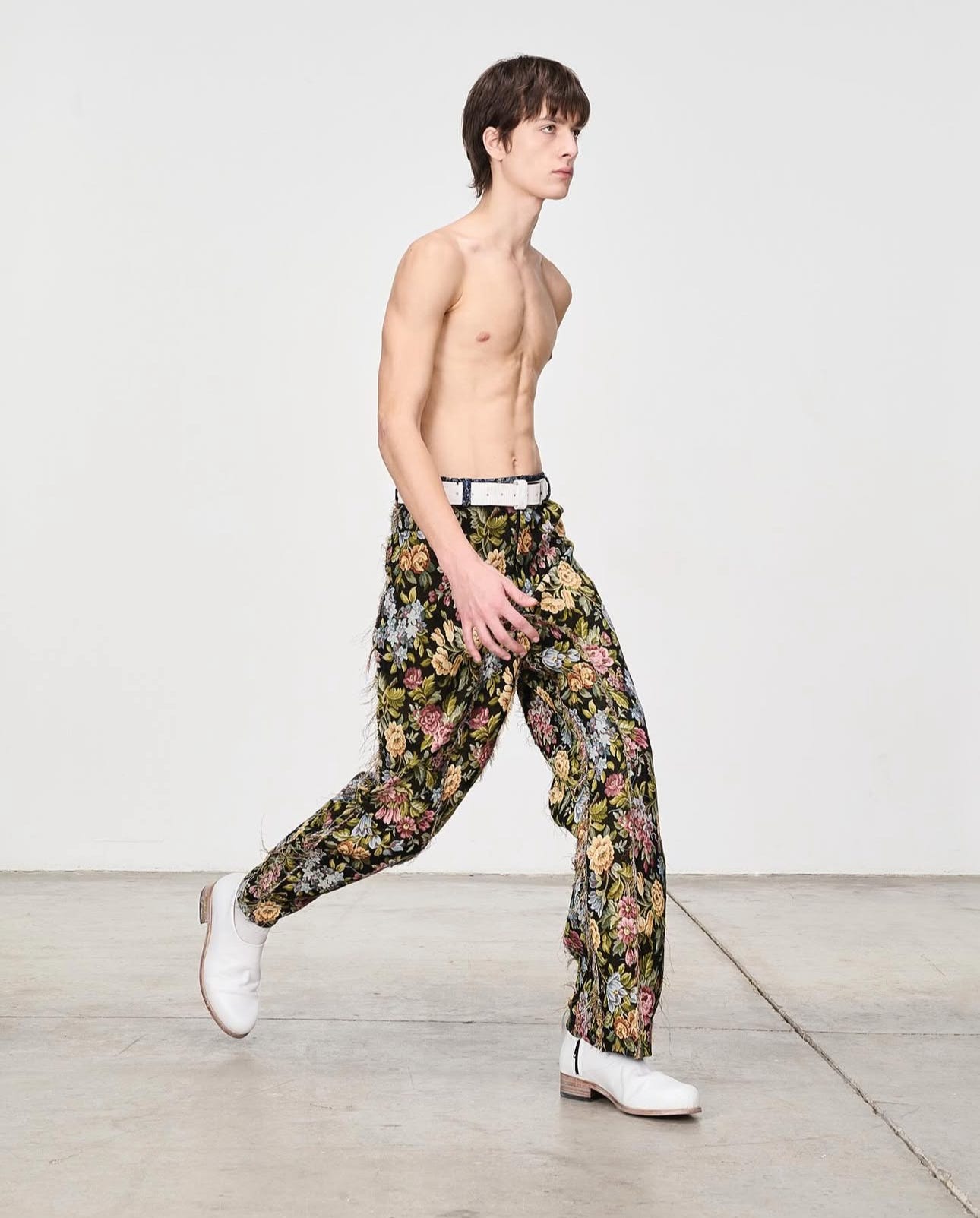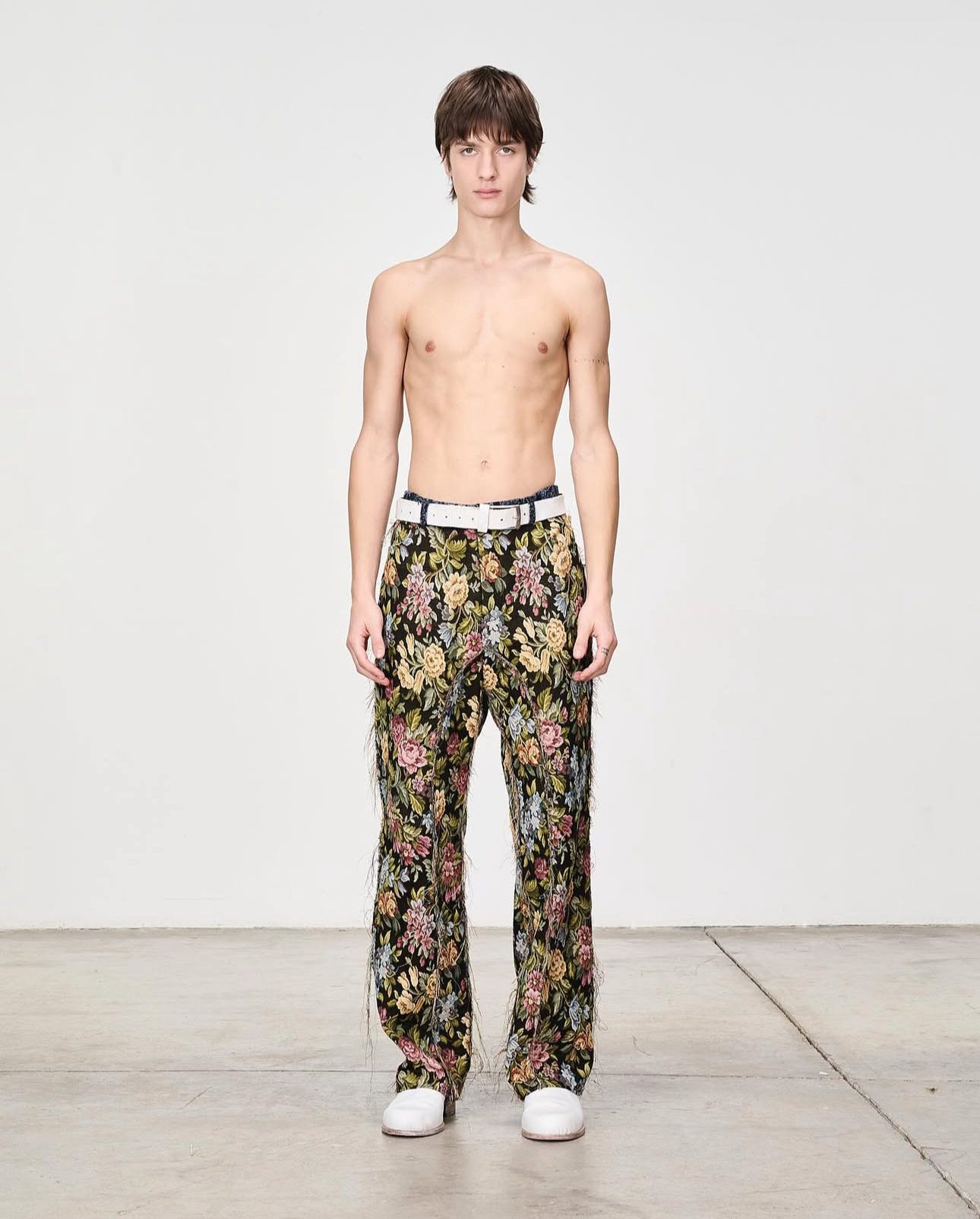Over the last week a few stories surfaced that touch on three of the most pressing and under-discussed issues in sustainable fashion: how ultra-fast fashion is changing the industry, how poorly understood the chemicals on our clothes are, and the impacts of mass production on quality control.
Sharing them below along with some other writing that made me feel things from Blackbird Spyplane and Rachel Tashjian. I also loved this piece by Alice Cavanagh in the New York Times on the British designer Ponte upcycling strange materials into clothes (image above).
The Fall of Forever 21 Means Fast Fashion Got Faster
Amy Odell, the author of the Substack Back Row and Anna: The Biography, covered the bankruptcy of one of the original fast fashion brands, Forever 21 in the New York Times. All of me wanted to claim this as a victory for sustainability, but rather depressingly, it was not. Odell writes:
“Forever 21 died not because of consumer consciousness raising but because of the bottom line: It couldn’t keep up with even faster fashion. In its bankruptcy filing, it blames competition from its online-only competitors Shein and Temu, both with roots in China — sellers of ultra-fast fashion — for its demise.”
Why is this important? Shein and Temu represent the first real change in fashion’s manufacturing in 150 years. Their speed to market is unparalleled, they use AI to predict what styles will be best sellers so they can carry less inventory, they’ve invested in their suppliers tech so they can operate under the same “cloud” system. This type of fashion is dangerous for the environment and for workers, but the system is also full of opportunities – sustainable opportunities that could make fashion more efficient. The rest of the industry has been too slow to recognise this, and more businesses will pay the price.
Is ‘Clean’ Fashion About to Have a Moment?
The impacts of chemicals in fashion have been under scrutiny since Alden Wicker, the founder of EcoCult released her book To Dye For in 2023. In this article in the Business of Fashion she explains to Allison Prang: “Fashion has many of the same chemicals and materials that people are concerned about in food packaging and homes and beauty products.”
Why is this important? As big consumers of fast fashion, due to our proximity to Asia and relative wealth in the region, Australia is a dumping ground for the world’s cheapest fashion. While we like to think there are people at the border preventing unsafe, toxic clothes from being sold here, that isn’t how the clothing trade works. Chemicals that might be marked toxic if imported in buckets, can come in on clothing because the clothes are not tested the way we imagine them to be (tests might be carried out by the brands themselves). The article covers this in more detail but studies have found the hormone-disrupting chemical BPA in sportswear, that Temu, Shein and Ali Express contain high levels of toxic substances, and that PFAs or forever chemicals are also found on stain resistant or waterproof garments.
Are Levi’s From Amazon Different From Levi’s From Levi’s?
In this article, the Strategist compares three different styles of the same Levi jeans. They bought some on Amazon and the same three styles from Levi’s directly and had them analysed by a materials expert. Unsurprisingly the six pairs had a few notable differences including the colour of the wash and the handfeel. In the lab, test results revealed that the denim in each of the six pairs was different but that it didn’t add up to gaps in quality; and interestingly there was no indication that the Levi’s from Amazon were worse. But variations, are variations.
What does this mean? This is really a story about how hard it is to control your supply chain when you’re mass-producing garments. At a certain level of production, you will exceed the capacity of a single supplier and have to go to more places for your cotton or leather or silk, and to more manufacturers. This brings in inevitable variations and makes having oversight of everything complicated, even for a huge business like Levi’s.
The article’s author Erin Schwartz writes: Levi’s sources its fabric from dozens of mills across the world, from luxury supplier Candiani in Italy to sites in India, Bangladesh, Mexico, and Turkey. The six pairs I tested were manufactured in three places: Cambodia, Macau, and Mexico. The company’s supply chain is vast, and to some extent, it makes sense that jeans made to the same specifications from different mills, dye facilities, and factories would result in different products.
If what you want is transparency, sustainability and ethical manufacturing or even just the simplicity of a guarantee about a product’s fit and feel, look to smaller product runs, by smaller designers.
Opulent Tips, Rachel Tashjian’s Newsletter
Tashjian is the fashion critic for the Washington Post and her invitation-only newsletter is one of the best things to read in bed when it lands in your inbox overnight. This week there was one passage that made me laugh and another that made me sigh so I screenshot both and sent them to a friend. Here they are:
The first is about Graydon Carter’s recent memoir:
Graydon’s “When the Going Was Good.” Of COURSE I loved Graydon’s book; I was once his PR flack’s flack! (That would be aforementioned RAFTM Beth Kseniak, described by GC with brilliant accuracy as “a thoroughbred.” The book basically opens by touting Beth’s achievements. Gradyon has always loved women, in a very old-fashioned, charismatic Cary Grant sort of way, where he just enjoys their company, and that is my favorite kind of straight man. The Hemingway ego routine is SO BLAH, especially as its contemporary equivalent is Andrew Tatertots/Joe Rogaine/Mr. Breasts. So you have a gun and can write short sentences? CONGRATS.)
The second: (on working at Vanity Fair)
But it was there I learned that you need to watch every movie, read every new novel, know about every fashion photographer and know the name of every good political, business and media reporter at every American paper and read all their pieces, but also inhale all the gossip pages forwards and backwards – because everything is interesting and being curious about everything is what makes life fun. I think, I hope, you get a bit of that from reading his book.
Blackbird Spyplane
A final thought – this excellent Substack was shared with me by Bri Lee (who has her own excellent Substack) and a line in it about ethical consumption has stayed with me: Ask yourself, are these pants a symphony?
Passage excerpted below: (I suggest reading the full thing here)
When you encounter a beautiful slapper, especially one with a price tag you’re inclined to balk at, ask yourself, Are these pants a symphony?
Ask: “Did a constellation of human (and perhaps even non-human) beings come together and give immensely and ingeniously of themselves in the creation of this garment?”
Why is this important? Well, what a great way to put the joy back into ethical consumption and to simultaneously raise the bar on what you can buy. Are these pants a symphony? Certainly not if they were mass manufactured but I do hope at least one pair of trousers you own is a symphony, because what a way to live!
It made me think of these floral masterpieces by Edward Cuming, they’re part of his FW25 collection Grow Up and haven’t been released yet. Visit his website here.








Love the question “are these pants a symphony” - will definitely be adopting that!